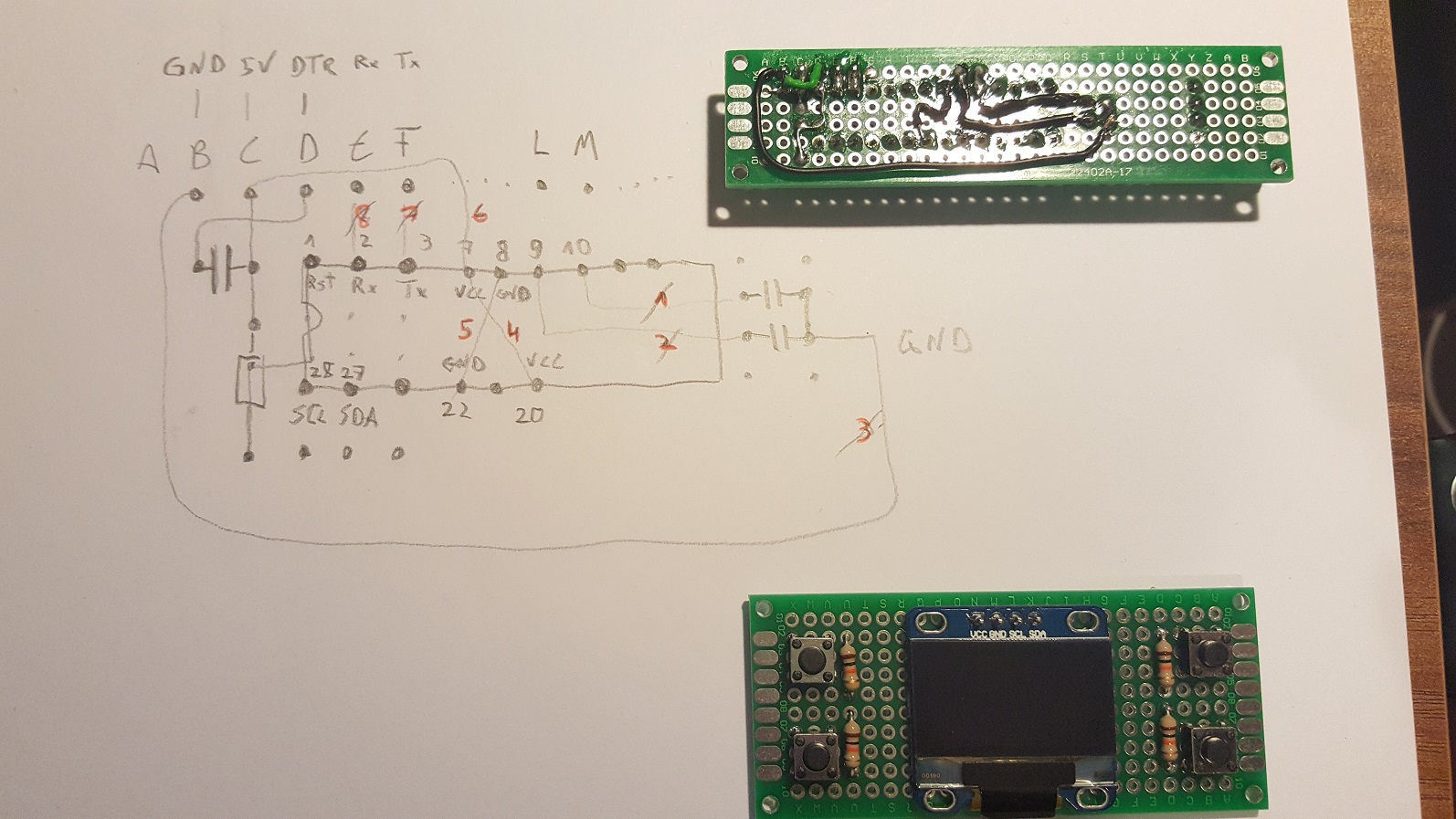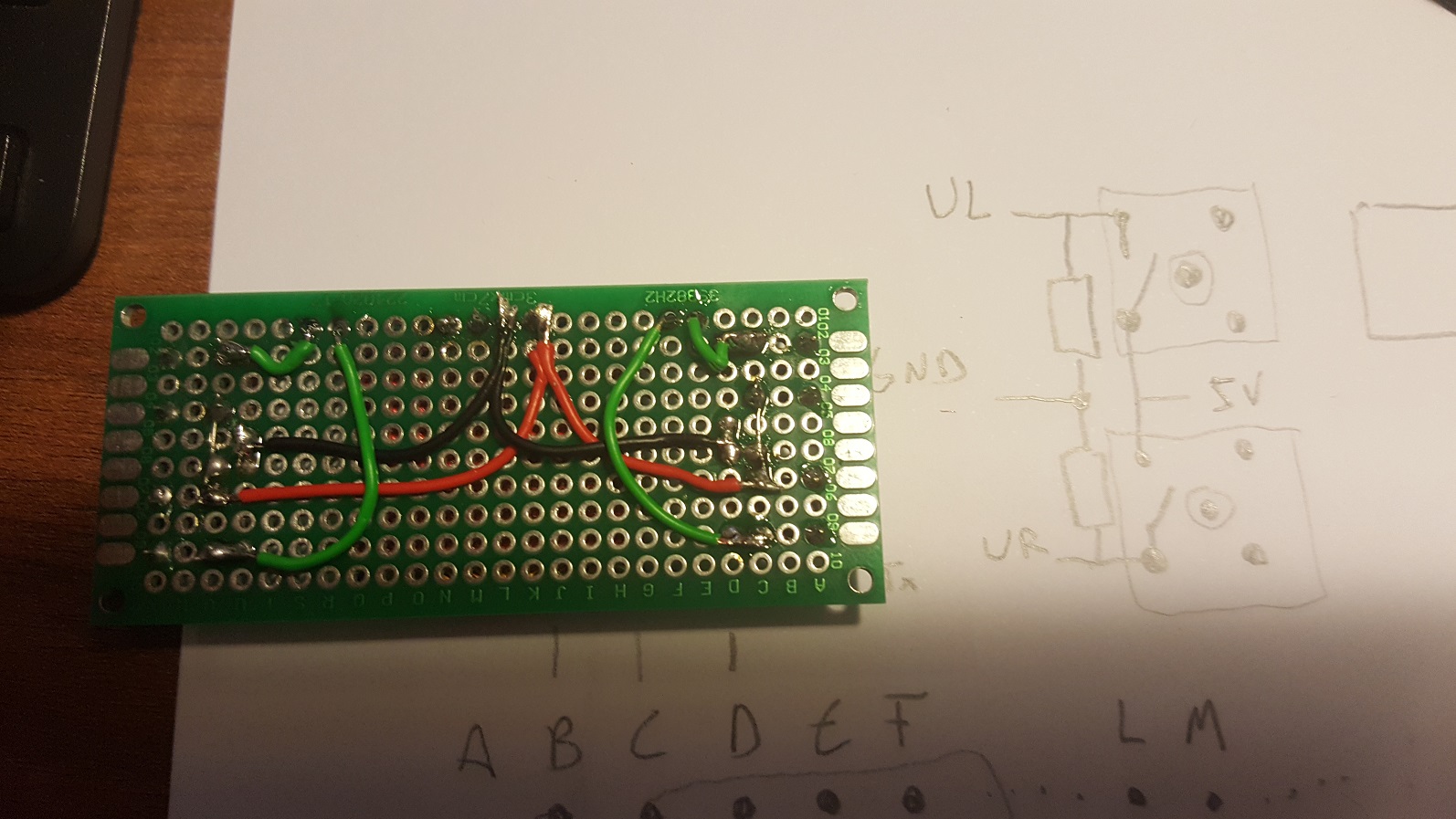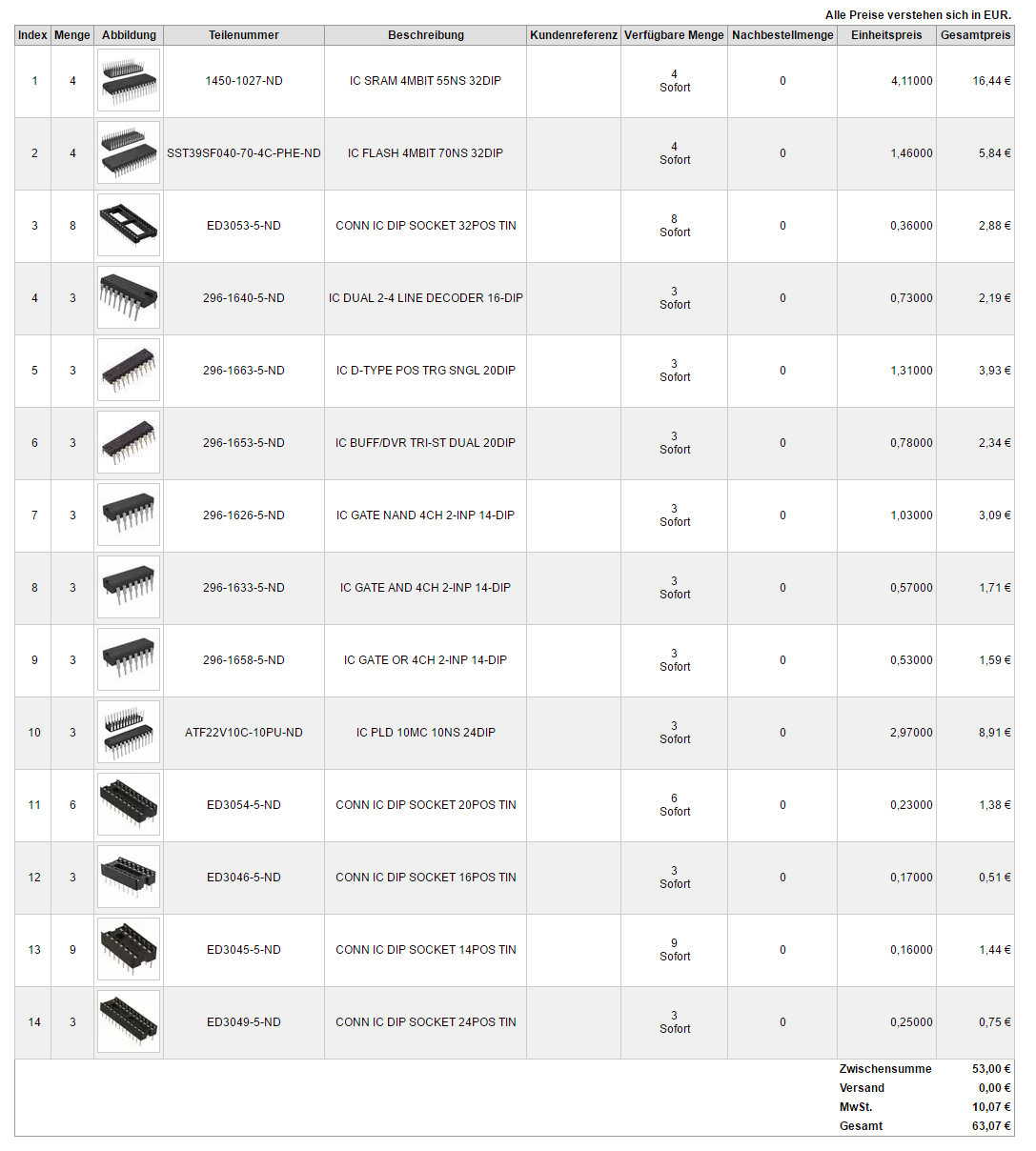That was more intense and exciting than I anticipated! I thought building my first “homebrew Arduino” from an atmega 328p and controlling an OLED via I2C shouldn’t be too complicated.
In fact, it isn’t, but there are a couple of things you have to think of, especially when you do it in this contrained space.
 And actually, you can see the wiring mistake I did up there, I connected the RST of the chip and the DTR of the FTDI port wrong. But chip, FTDI and capacitor survived it…
And actually, you can see the wiring mistake I did up there, I connected the RST of the chip and the DTR of the FTDI port wrong. But chip, FTDI and capacitor survived it…
I also did the buttons wrong as the buttons were rotated and always ON / HIGH. So, I changed the layout from this:
To this: So now the power is on the upper part of the buttons, instead of the right (for the left buttons).
So now the power is on the upper part of the buttons, instead of the right (for the left buttons).
Yeah, so finally, here’s the first power up! The date / time is wrong because the third perf board with the RTC and the speaker are not connected yet, so the clock starts when the atmega is powering up:
